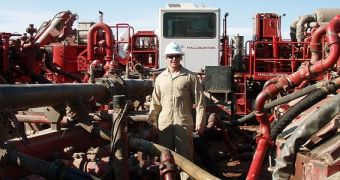A group of researchers in Ohio have for the first time linked hydraulic fracturing, or fracking, to the generation of small earthquakes. Their work was carried out on a geological formation buried deep under the Appalachian mountains and has already sparked reaction among state officials.
The first consequence of the new report is that companies seeking to engage in this type of natural resources exploitation in the state will from April 11 onwards have to respect a more strict set of conditions for obtaining the necessary permits. The new regulations are among the strictest in the country when it comes to fracking, a process that has long since been suggested to cause tremors.
In March, five small tremors were recorded in the Youngstown area, close to the foothills of the Appalachians, and a state investigation was ordered into what caused them immediately thereafter. The study revealed that the injection of water and sand that comes with fracking affected a previously-unknown fault line at this location, causing the earthquakes.
Hydraulic fracturing is currently being used in the nearby Utica Shale, but the effects this exploitation has on surrounding terrain have apparently not been investigated thoroughly enough. The two are probably linked, commented State Oil & Gas Chief Rick Simmers for AP. He added that this is the first study to directly tie fracking to the generation of earthquakes.
The sand and water believed to have destabilized the small fault line were injected into the ground via two deep wells that are used for fracking wastewater disposal. The new discovery does not imply that fracking causes the same effects wherever used, since the procedure targets different types of rocks at different locations. However, it does reveal scenarios that were previously not accounted for.
Simmers said that the company exploiting the Utica Shale adhered to standard rules and legislation and that it did not engage in forbidden activities that may have led to the tremors. In all likelihood, workers here just got unlucky for affecting an unknown fault line. The United States Geological Survey should have provided high-resolution tectonic map of this entire area before permits to drill were awarded.
Based on the new findings, a number of states in the US have already begun discussing the implications of this research for the hydraulic fracturing industry, said recently the associate executive director of the Interstate Oil and Gas Commission, Gerry Baker, as quoted by The Huffington Post.
Since its earliest days, fracking has been associated with an increased risk of producing tremors and of contaminating groundwater reserves. This exploitation technique works by injecting large volumes of water and chemicals into the ground, which break apart rocks that contain oil and natural gas. This fracturing allows the fossil fuels to flow to the surface, and the gap is filled with water and sand.

 14 DAY TRIAL //
14 DAY TRIAL //